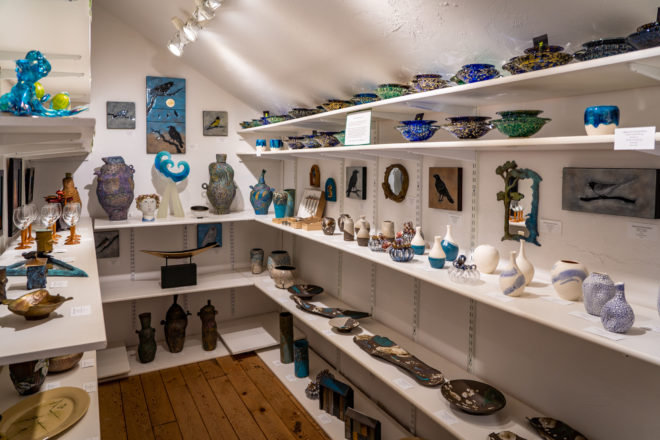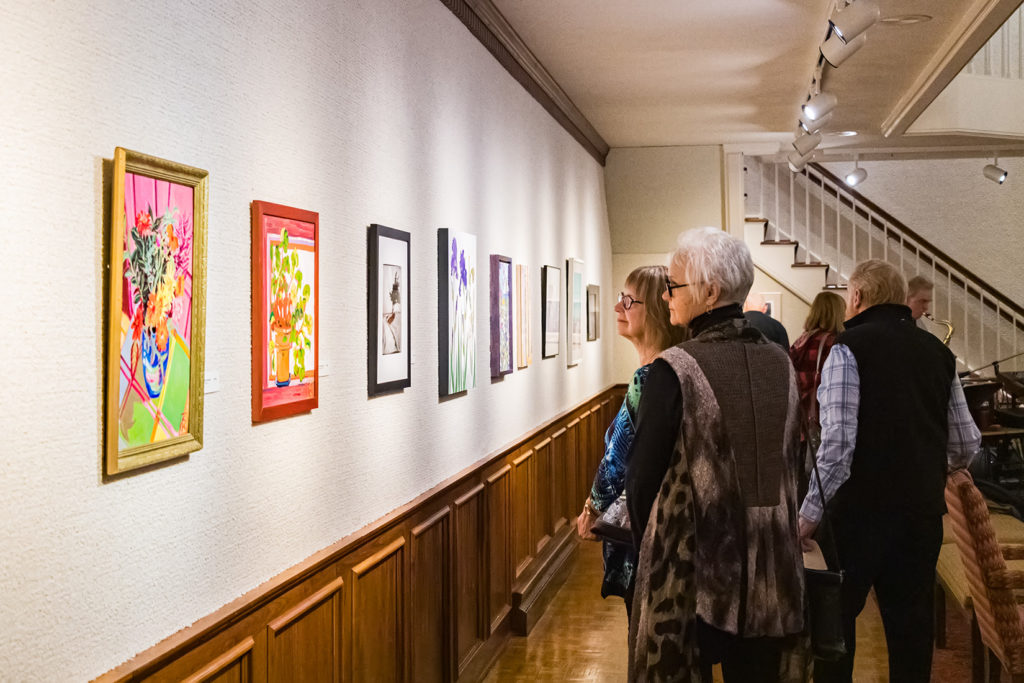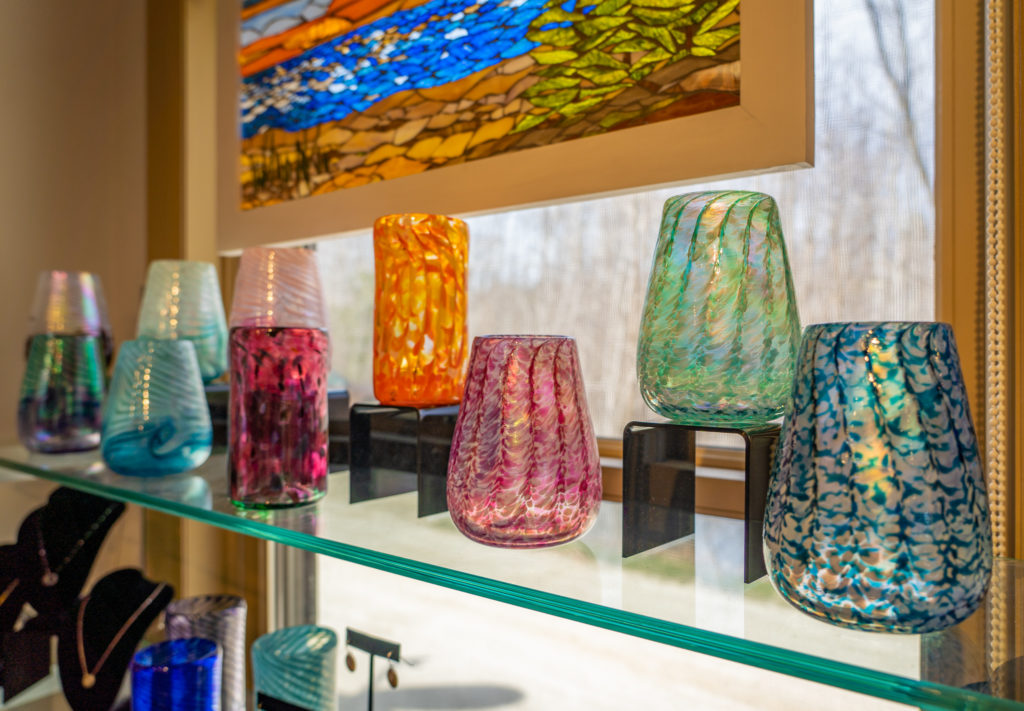A Perfect Match: How do artists find the right gallery to represent their work?
- Share
- Tweet
- Pin
- Share

Artists looking for gallery representation in Door County have a wide range of choices, but they also have strong competition because many – both local and from across the country – are vying for a spot on a gallery wall somewhere on the peninsula.
Edgewood Orchard Galleries in Fish Creek receives 50-100 new applications each year, and of those, typically five new artists will be invited to show their work. That’s because gallerists want to find artists whose work meshes with both their gallery space and the interests of their customers.
“Over the gallery’s 50-plus years, we’ve worked out a good system to evaluate each submission carefully and completely to find artists that we feel are a perfect fit for our gallery space,” said co-owner J.R. Jarosh.
One of the key things Edgewood Orchard Galleries looks for is a limited body of work.
“Just show us six to 10 of your very best pieces,” Jarosh said, “and make sure at least half of them are available. Seeing everything that has sold is nice to see, but we are curious about what you are interested in showing with us for the upcoming season.”
If artists want to help shift the odds in their favor, it’s best to do some homework first.
Helen del Guidice, curator at the Miller Art Museum in Sturgeon Bay, suggests artists start by looking at the gallery’s website to research its mission and the type of work it displays.
“Don’t seek out a blue-chip realist gallery if you are an emerging artist who does contemporary abstracts,” she said, borrowing a term from the stock market that describes artists whose art has had consistent years of sales.

To assist artists in their search, most galleries post submission guidelines on their Facebook page or website. Not only does this streamline the vetting process for the artist, but it also helps busy gallerists who generally don’t have time for in-person inquiries.
“I have had people literally walk into the gallery, work in hand, expecting attention, regardless of whether I have customers or not,” said Jillaine Seefelt at Woodwalk Gallery. “For me, that is a big no-no.”
Social-media platforms are other places artists should check. If Seefelt is looking for new artists, she posts an invitation on Facebook, in addition to Woodwalk’s website, generally in the fall, to prepare for the following season.
Finding representation or exhibit opportunities is like applying for a job, del Guidice said, so treat it that way.
“Get your bio and statement professionally written, or [enlist] support from someone with experience to assist you in writing an engaging, clear, to-the-point and current statement/bio,” she said.
Professional photos of the work don’t hurt either. Dan Cross at Idea Gallery in West Jacksonport recommends that artists hire a professional photographer unless they’re very adept at photographing art.
“Photos of work should be in focus and as close to the color of the work as possible,” he said, and a high-resolution jpeg format is preferred. “Too many artists try to photograph their work without good lighting and use their handheld phone. This creates blurry photos,” Cross said.
If artists are photographing their own work, he suggests doing it outside on a cloudy day because “this provides the most even lighting.” Use an easel for two-dimensional work, and a tripod will help to avoid shaking a handheld camera.
When artists do find the right gallery, how they pack and ship their work is important both for protecting it and creating a good impression.

“At the start of the season, our gallery receives 200-plus works, so works need to be protected well as they are moved around a lot,” Cross said.
If they’re hand delivered, pieces should be wrapped individually in bubble wrap, foam sheets or bags with removable tape. If shipped, the artwork should be double-boxed with cushion materials in between to avoid damage during transit. Work in transit should also be insured for its price and value. Before packing, artists should note their name, medium, overall size and price.
Approaching a gallery can feel intimidating, but it can lead to success when handled with consideration and etiquette. Big galleries have directors with years of experience, so if artists catch them at a quiet time or by email, they may have an opportunity to ask advice. Artists should just be respectful of the directors’ time by not bombarding them with emails and phone calls.
“We love art, and we love new artists,” Jarosh said, “so the absolute hardest thing for us as gallery owners is to say, ‘No, thank you’ to a very talented artist whose work we like but don’t have a place for just yet.” And if at first an artist doesn’t succeed, take heart.
Jarosh said, “Some very successful artists that we have represented for years took two or three years of submitting their work before we accepted it.”

Plum Bottom Gallery
Three locations, open all year
Chad Luberger, co-owner of Plum Bottom Gallery, has some questions for artists who want their work to appear in his gallery.
“When are you ready to present your work to a gallery? What does it mean when you want gallery representation? What are your goals?” he asked.
Do you want to make 40 pieces a year and sell them in a gallery? Or do you want to produce a very limited body of work? Is your work framed? These are all questions to ask and explore. But one question, above all, is most important to gallery owners: Do you have a consistent body of work?
“That’s what a gallery is looking for – a consistent body of work,” Luberger said. “What is difficult is when we get just eight pieces, and we have done the marketing, and we sell them, and then the artist doesn’t have any more. If we don’t have consistent work, it is difficult to develop a following for that artist.”
Good communication between the artist and the gallery is also key, especially when life events affect an artist’s work.
“Things happen,” Luberger said. “People have children; there’s a death in the family. Artists need to keep the gallery informed of changes which will affect their work – and be realistic.”
Luberger said that understanding what it’s like from both the artist’s and the gallerist’s perspective is important. When he started 16 years ago, Plum Bottom was a little pottery studio in the woods with a sole artist. Now it has three locations – a second gallery in the center of Egg Harbor and a new location in Fish Creek – that are all open year-round. He also has an online business with a dedicated e-commerce sales director.
The gallery doesn’t have a lot of artist turnover because it’s Luberger’s goal to develop solid working relationships with artists over the course of their careers.
“For us, art needs an audience,” he said. “And for our business to work, it needs to find an audience. It’s not a quick process to figure that out.”


